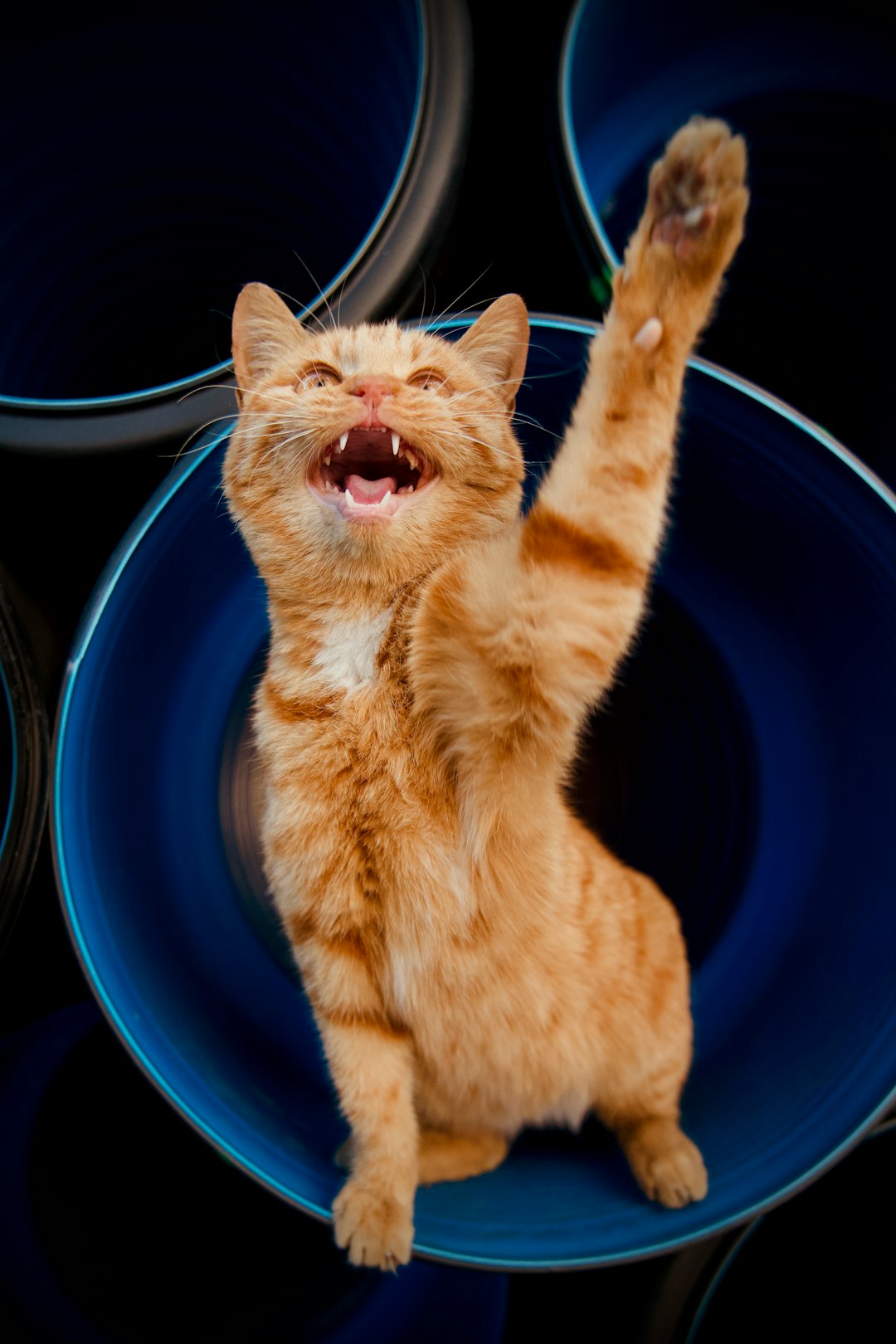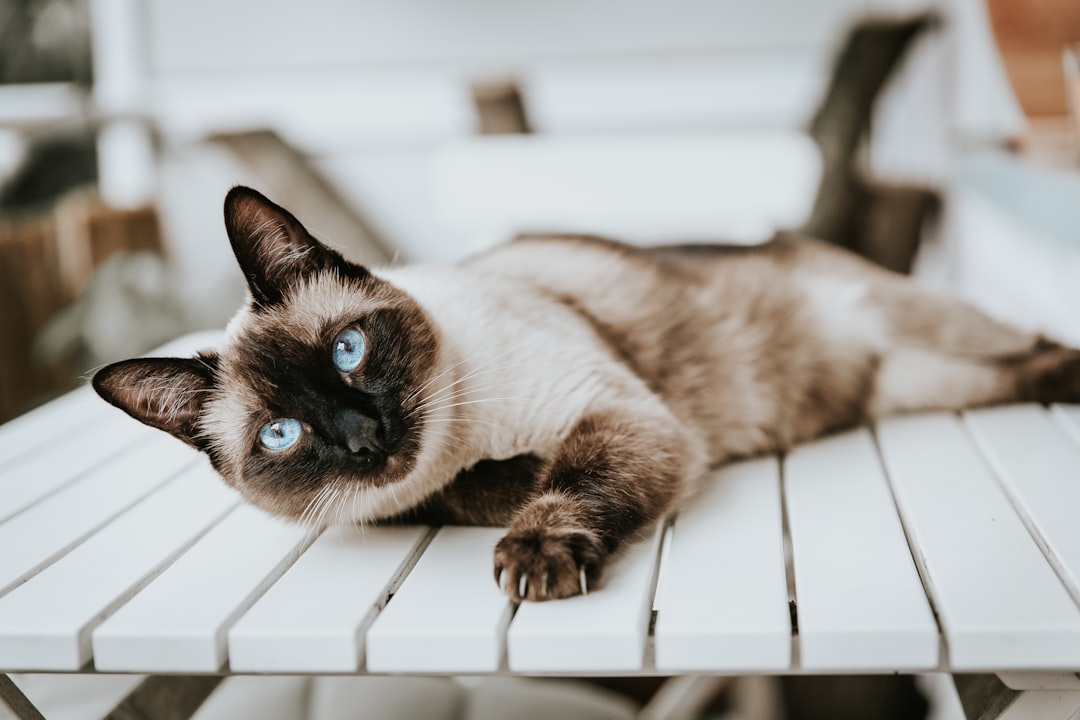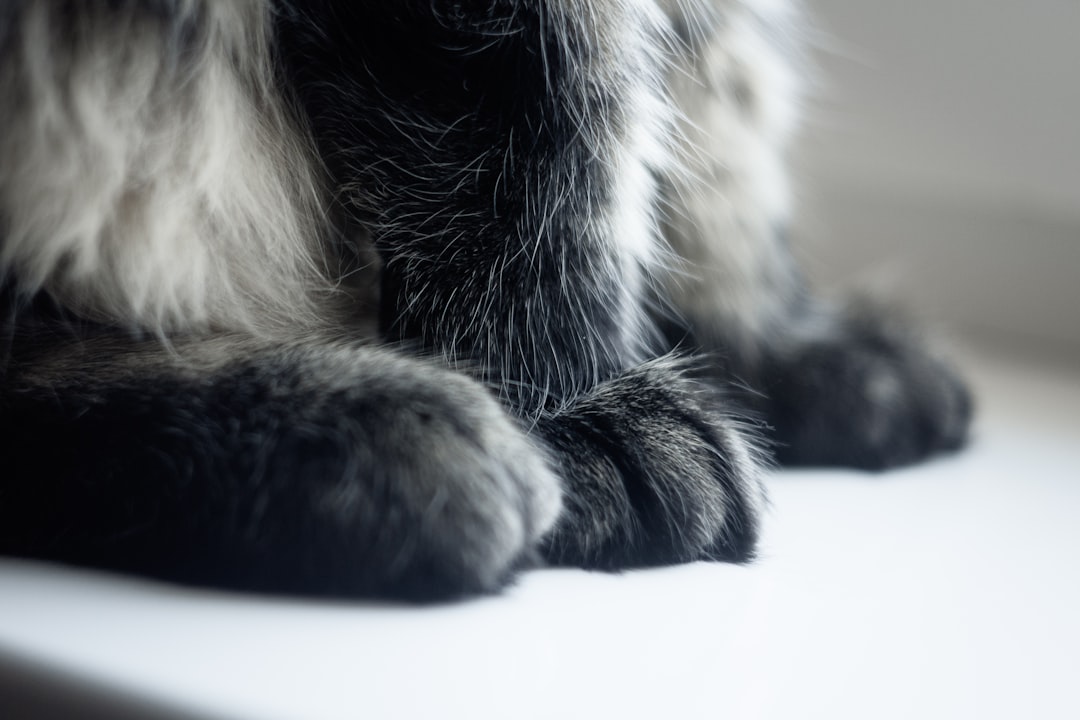Cats are often considered independent creatures, yet many feline owners find themselves asking, “Why is my cat so clingy?” This behavior can stem from various factors, and understanding why your cat seeks your constant companionship is crucial for nurturing a healthy relationship. From early socialization to emotional needs and even potential health concerns, multiple elements influence your cat’s attachment to you. In this blog post, we’ll delve into the common reasons behind this clinginess, explore how lifestyle changes can affect your cat’s behavior, and provide tips for managing it effectively. By gaining insight into your cat’s body language and emotional needs, you can strengthen the bond you share and ensure your furry friend feels secure and happy.
Understanding Cat Behavior
The Nature of Feline Affection
Cats are often misunderstood when it comes to their affection. Unlike dogs, they exhibit love in more subtle ways. When asking, “Why is my cat so clingy?”, it’s essential to appreciate that their attachment is driven by instinct. Felines are naturally social creatures and tend to form strong bonds with their humans. This bond can be expressed through actions such as:
| Behaviors | Explanation |
|---|---|
| Purring | Indicates comfort and happiness. |
| Slow Blinking | A sign of trust and relaxation. |
| Sitting on Your Lap | A way to seek warmth and companionship. |
| Following You Around | Shows their desire for proximity and safety. |
Understanding these behaviors can clarify your cat’s motivations for being close, making their affection easier to interpret.
Differences in Cat Personalities
Not all cats behave in the same way; each feline has its unique personality traits influenced by genetics, environment, and past experiences. Here are some common personality types:
| Personality Type | Description |
|---|---|
| Affectionate | Seeks constant companionship and attention. |
| Independent | Prefers solitary time and may not engage as frequently. |
| Playful | Enjoys interactive play and social engagement. |
| Mellow | Calm and content, may cling sporadically. |
When pondering “Why is my cat so clingy?”, consider these personality differences along with your cat’s specific experiences. Understanding their individual behaviors will create a more fulfilling relationship between you and your feline friend.
Common Reasons for Clinginess
Understanding why your feline friend exhibits clingy behavior can help strengthen your bond and improve their well-being. Cats can be incredibly affectionate companions, yet their clinginess might leave you wondering, “Why is my cat so clingy?” Here are some common reasons why they may seek your company.
Seeking Attention and Affection
Some cats are naturally more social and affectionate than others. When they feel the need for companionship, they often follow their owners around, seeking attention. This behavior may stem from:
| Reason | Description |
|---|---|
| Bonding | Cats thrive on social interactions and may show clinginess as a sign of affection. |
| Curiosity | Cats are inquisitive by nature and will follow you to satisfy their curiosity about your activities. |
| Stress or Anxiety | Changes in their environment may lead to anxiety, causing them to cling for security. |
Hunger and Thirst Signals
Another reason your cat might be extra clingy is that they are signaling their needs. When cats are hungry or thirsty, they often seek out their owners to express their desires. Pay attention to the following cues:
| Behavior | Potential Meaning |
|---|---|
| Meowing or Purring | These vocalizations may indicate a desire for food or water. |
| Leading You to Bowl | If your cat guides you to their food or water bowl, it’s a clear signal they need something. |
| Increased Clinginess During Mealtimes | Cats may stay close to you around mealtimes, hoping to prompt feeding. |
By understanding these common reasons for clinginess, you can better respond to your cat’s needs and create a more nurturing environment for them.
The Role of Early Socialization
Kittens and Their Development
Socialization during a kitten’s early weeks is crucial for shaping their behavior as adult cats. From around 2 to 9 weeks of age, kittens are in a critical period for learning about their environment and developing social skills. During this time, positive interactions with humans and other animals can instill a sense of security. If not properly socialized, a kitten may develop anxiety or insecurity, which can manifest as clinginess.
| Development Stage | Socialization Activities | Effects on Clinginess |
|---|---|---|
| 2-3 weeks | Introduce gentle human handling | Builds trust and reduces fear |
| 4-6 weeks | Play with toys and other kittens | Encourages confidence |
| 7-9 weeks | Exposure to various sounds/people | Decreases sensitivity to new stimuli |
Impact of Environment on Behavior
The environment in which a kitten is raised significantly influences its behavior. A nurturing, stimulating environment fosters self-assurance and independence, while a stressful or neglected setting can lead to excessive clinginess later in life. If you’re wondering why is my cat so clingy?, consider the following environmental factors:
- Positive Reinforcement: Rewarding social interactions can encourage a kitten’s attachment to humans without fostering dependency.
- Structured Routine: A predictable daily routine helps kittens feel secure and less anxious, reducing clinginess.
- Safe Spaces: Providing cozy hiding spots allows kittens to explore their surroundings at their own pace, promoting confidence.
In conclusion, early socialization sets the foundation for a cat’s emotional health and attachment style. By ensuring a supportive environment, you can encourage your cat to thrive independently while still enjoying your companionship.
Emotional Needs of Cats
Understanding the emotional needs of your feline friend is crucial to fostering a healthy relationship. Cats, like humans, possess a range of feelings, and those feelings significantly influence their behavior, including clinginess. By addressing these emotional needs, you can enhance your bond with your cat and better understand why is my cat so clingy?
Separation Anxiety
For many cats, separation anxiety can lead to clinginess. This condition occurs when a cat feels stressed or insecure when their owner is out of sight or absence from home. Signs include excessive meowing, destruction of property, and even avoiding food. Below is a table summarizing the symptoms of separation anxiety:
| Symptom | Description |
|---|---|
| Excessive Vocalization | Frequent meowing or yowling when alone. |
| Destructive Behavior | Scratching furniture or knocking over items. |
| Loss of Appetite | Reluctance to eat when alone. |
| Litter Box Issues | Urinating or defecating outside the litter box. |
Bonding with Human Companions
Cats thrive on companionship. They seek affection and validation from their human family members. Building a strong bond can help alleviate clinginess. Some effective bonding techniques include:
- Dedicated Playtime: Engage your cat in interactive play for at least 20 minutes daily.
- Gentle Petting and Cuddling: Establish trust through regular, gentle touch.
- Positive Reinforcement: Reward your cat with treats or praise when they show independence.
By recognizing these emotional needs and implementing strategies to fulfill them, you can help reduce clinginess in your feline friend. Understanding why is my cat so clingy can lead to a more harmonious household and a stronger relationship.
Health Issues Leading to Clinginess
Underlying Medical Conditions
When pondering Why is my cat so clingy?, it’s essential to consider that some health issues may lead to increased attachment behaviors. Cats, like humans, can experience a range of medical conditions that directly impact their behavior. Some common health issues that may result in clinginess include:
| Condition | Description |
|---|---|
| Hyperthyroidism | An overactive thyroid can lead to hyperactivity and increased need for attention. |
| Arthritis | Pain from joint issues may make cats seek comfort from their owners. |
| Kidney Disease | This condition can lead to lethargy, making a cat more dependent on its owner. |
| Diabetes | Similar to kidney disease, this can cause fatigue and increased need for care. |
| Infections | Illness can result in unusual behavior, including clinginess. |
Changes in Behavior Due to Illness
When cats are unwell, they often exhibit changes in behavior that can manifest as clinginess. Unlike other situations where they may simply seek companionship, a sick cat may rely on owners for reassurance, comfort, and care. Key points to note about behavioral changes include:
- Increased Dependency: Cats might follow their owners more closely to feel secure. They often seek warmth and comfort during illness.
- Vocalization Changes: A cat may meow more frequently, seeking attention and care, indicating discomfort or pain.
- Withdrawal from Play: A normally playful feline may lose interest in activities, preferring to stay close to their owner for support.
If your cat exhibits clingy behavior alongside any of these signs, it might be time to consult with a veterinarian. Addressing any underlying health concerns is crucial for ensuring your cat’s well-being.
The Impact of Lifestyle Changes
Lifestyle changes can significantly affect a cat’s behavior, including its tendency to be clingy. Understanding these changes is crucial for any cat owner seeking to maintain a harmonious environment.
Moving to a New Home
Relocating can be overwhelming for cats. Their territory is essential for their sense of security. When you ask, “Why is my cat so clingy?”, a move may be the culprit. Here are a few ways this transition can impact their behavior:
| Aspect | Impact on Cats |
|---|---|
| Territory | Cats become disoriented in new spaces, often seeking comfort in their owners. |
| Familiarity | New sounds and smells can trigger anxiety, causing them to cling for reassurance. |
| Routine | Changes in feeding or playtimes can amplify their stress levels. |
Introduction of New Pets
Introducing a new pet can also induce clingy behavior in your cat. The presence of another animal may evoke feelings of jealousy or insecurity. Consider the following factors:
| Aspect | Impact on Cats |
|---|---|
| Social Dynamics | Cats rely heavily on established social structures; changes can lead to clinginess. |
| Competition | They may feel threatened and seek reassurance from their human companions. |
| Stress Levels | The introduction of a new pet can raise anxiety, prompting your cat to stick closer to you. |
In both scenarios, recognizing the emotional impact of lifestyle changes assists owners in addressing their cat’s needs effectively. Understanding how and why these transitions affect your feline friend can foster a closer bond and create an environment of stability and comfort.
Understanding Cat Body Language
Interpreting Signs of Attachment
Cats communicate a great deal through their body language. Understanding these gestures can help you interpret why is my cat so clingy? Key signs of attachment include:
| Body Language | Meaning |
|---|---|
| Purring | Indicates contentment and comfort when close to you. |
| Slow Blinking | A sign of trust; it’s like a cat’s version of saying “I love you.” |
| Head Butting | Marks you with their scent, claiming you as part of their territory. |
| Kneading | Instinctual action from kittenhood; signifies comfort and happiness around you. |
These behaviors often indicate a strong bond between you and your feline friend. Recognizing these signals can enhance your relationship.
Recognizing Signs of Distress
On the flip side, clinginess can also denote distress. Here are a few signs that your cat may be feeling anxious or uncomfortable:
| Body Language | Meaning |
|---|---|
| Hiding | Indicates fear or insecurity; your cat may seek solace in your presence. |
| Tail Position | A down or tucked tail suggests they’re feeling threatened or overwhelmed. |
| Excessive Grooming | Can signal stress; this behavior is often a coping mechanism. |
| Vocalizing | Increased meowing might point to anxiety or a need for attention. |
Understanding these signals helps in fostering a secure environment for your cat, addressing any concerns that could lead to clingy behavior.
Tips for Managing Clingy Behavior
Creating a Balanced Routine
Establishing a consistent daily routine can significantly help in managing your cat’s clinginess. Cats thrive on predictability, and knowing when to expect meals, playtime, and cuddles can make them feel more secure. Consider the following aspects of a balanced routine:
| Activity | Timing | Benefits |
|---|---|---|
| Feeding | Same times daily | Reduces anxiety related to hunger |
| Playtime | Daily, at a set time | Stimulates mental and physical activity |
| Quiet Time | Scheduled relaxation | Encourages tranquility and reduces stress |
Incorporating structured activities can reassure your cat, fostering a sense of stability.
Encouraging Independence
To combat clinginess effectively, it’s crucial to cultivate your cat’s independence. Here are several strategies you can employ:
- Interactive Toys: Providing engaging, solitary play options can divert their attention and stimulate independent play.
- Safe Spaces: Create cozy areas where your cat can feel secure alone. A comfortable bed or a window perch can encourage solitude.
- Gradual Alone Time: Start with short periods apart and gradually increase the time. This helps your cat learn to enjoy their solo moments.
By focusing on these methods, you can help address the question, “Why is my cat so clingy?” While constant attachment can signal underlying issues, these tips can guide you toward fostering a more balanced relationship with your feline friend.
When to Seek Professional Help
Identifying Red Flags
Recognizing when your cat’s clinginess exceeds typical behavior is crucial for ensuring their well-being. Here are some key indicators that may warrant professional assistance:
| Behavior | Concern Level |
|---|---|
| Frequent excessive vocalization | High |
| Loss of appetite | High |
| Lethargy or decreased energy | High |
| Changes in litter box habits | Moderate to High |
| Aggression or fearfulness | High |
If you notice these behaviors persisting over time, it may be time to address the cause more seriously, as they can indicate underlying health issues or emotional distress.
Consulting a Veterinarian or Behaviorist
When facing significant clinginess, it’s wise to consult a professional. In choosing between a veterinarian and a certified animal behaviorist, consider the following:
| Professional | When to Consult |
|---|---|
| Veterinarian | If your cat shows signs of illness or distress, like weight loss or lethargy. |
| Behaviorist | If clinginess is due to behavioral issues, anxiety, or fear. |
Both professionals can provide tailored guidance to meet your cat’s specific needs. They can help determine if Why is my cat so clingy? stems from behavioral or medical problems, ensuring your feline friend gets the appropriate care and support necessary for a happy, healthy life.
The Benefits of a Strong Bond
Building a strong bond with your feline friend can greatly enhance both of your lives. Understanding this relationship can answer the question “Why is my cat so clingy?” Here are some key benefits of nurturing this connection:
Enhanced Emotional Well-being
A secure attachment between you and your cat can significantly improve emotional well-being for both parties. This bond often leads to:
| Benefit | Description |
|---|---|
| Reduced Anxiety | A strong bond can alleviate feelings of stress or loneliness in cats. |
| Increased Happiness | Cats thrive on attention and affection, making them more playful and content. |
| Better Behavior | Secure cats often exhibit improved behavior, eliminating destructive tendencies. |
Building Trust with Your Cat
Trust is essential for a healthy cat-owner relationship. Here’s how a strong bond fosters trust:
| Aspect | Importance |
|---|---|
| Consistency | Regular routines build familiarity, making your cat feel safe. |
| Positive Reinforcement | Techniques like playtime and treats during interactions strengthen trust. |
| Comfort in Vulnerability | Closer bonds allow cats to express themselves freely, knowing they’re safe. |
By understanding these benefits, it’s clear how a strong bond can contribute to the overall health and happiness of your cat, while also addressing questions like “Why is my cat so clingy?” Fostering this relationship not only enriches your life but helps your cat thrive as well.
Frequently Asked Questions
What are the common reasons a cat may become clingy?
Cats may exhibit clingy behavior for several reasons, chiefly due to their emotional needs and environmental factors. A common cause is the bond they share with their owners; many cats seek comfort and companionship, especially after experiencing a significant change like moving to a new home. Additionally, stress or anxiety stemming from overcrowded or chaotic environments can lead cats to cling to their owners for reassurance. Illness or pain can also cause a cat to seek closer contact as they may feel vulnerable at that time.
When should I be concerned about my cat’s clingy behavior?
While it’s normal for some cats to be more attached than others, sudden changes in clinginess can be a cause for concern. If your cat, who is usually independent, suddenly starts following you everywhere, it could indicate stress, anxiety, or an underlying health issue. If this behavior is accompanied by other symptoms such as changes in eating habits, grooming, or litter box usage, a visit to the veterinarian is recommended to rule out medical problems.
Can I encourage my cat to be less clingy?
Yes, you can gradually encourage your cat to be less clingy through positive reinforcement and environmental enrichment. Providing more stimulating toys and interactive play sessions can divert their attention and give them an outlet for their energy. Establishing a routine that includes ample independent time while rewarding them for playing alone can help foster independence over time. Additionally, creating safe spaces with cozy hideaways or perches can boost their confidence in being alone.
Is there a difference between clinginess and attention-seeking behavior?
Yes, while clinginess and attention-seeking behavior are related, they are not synonymous. Clinginess generally denotes a cat that seeks physical presence or companionship, often remaining close to their owner. On the other hand, attention-seeking behavior may involve vocalizations, pawing, or nudging, and can be a way for a cat to solicit attention regardless of their need for closeness. Understanding the motivation behind each behavior can help in addressing their needs effectively.
How can I identify if my clingy cat is feeling anxious or insecure?
Identifying anxiety or insecurity in a clingy cat requires observing their behavior and body language closely. Signs of anxiety may include excessive grooming, hiding, reluctance to eat, or aggression towards other pets. Additionally, watch for changes in vocalization; an anxious cat may vocalize more than usual. If your cat displays clinginess along with these behaviors, it’s essential to assess their environment and consider consulting with a veterinarian or animal behaviorist to address their anxiety effectively.



